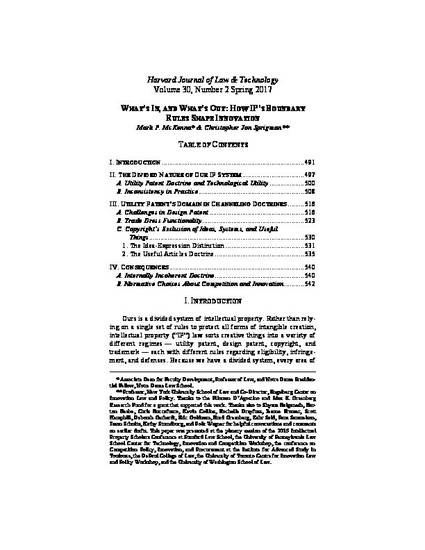
Intellectual property law sorts subject matter into a variety of different regimes, each with different terms of protection and different rules of protectability, infringement, and defenses. For that sorting to be effective, IP needs principles to distinguish the subject matter of each system. This paper focuses on one of the most important aspects of border-drawing that our IP system undertakes — identifying “useful” subject matter.
This aspect is critical because our IP system gives utility patent law pride of place and draws the boundaries of the other doctrines in large part to respect utility patent’s supremacy. Yet IP law’s sense of utility patent law’s domain is poorly theorized, and courts’ understanding of the boundaries of utility patent is mostly reductive and intuitive. While it’s clear that claimed inventions must be useful, courts inconsistently enforce a technological understanding of utility. That view of utility is normative rather than empirical. And its under-theorization has consequences for patent law itself — consequences that cascade across the other forms of IP because each of the other systems defers protection for these “useful” or “functional” features to utility patent.
The problem is much more than a doctrinal one, since the sorting rules we develop cannot help but shape the nature and direction of innovation. IP incentives regarding software, for example, are necessarily shaped by the ways we sort some aspects into patent law and others into copyright. The choice of IP systems will also have significant competitive consequences. Different mixes of IP regimes (and of IP regimes with other types of regulatory exclusivity, etc.) will promote competition along different dimensions. A patent-heavy system will promote competition along utilitarian or conventionally “functional” characteristics, and systems that rely more on trademark/advertising are going to promote competition along other, more phenomenological, dimensions.
Until we appreciate all of the forms of utility, and until we have a calculus for understanding their relative value, we can’t think coherently about which types of competition we want to promote or the costs of promoting that type of competition. Nor can we even think about how best to satisfy consumers’ actual demand, or how different IP regimes can actually help shape that demand. We are blind to a variety of considerations that actually affect consumer welfare.
Available at: http://works.bepress.com/mark_p_mckenna/89/
